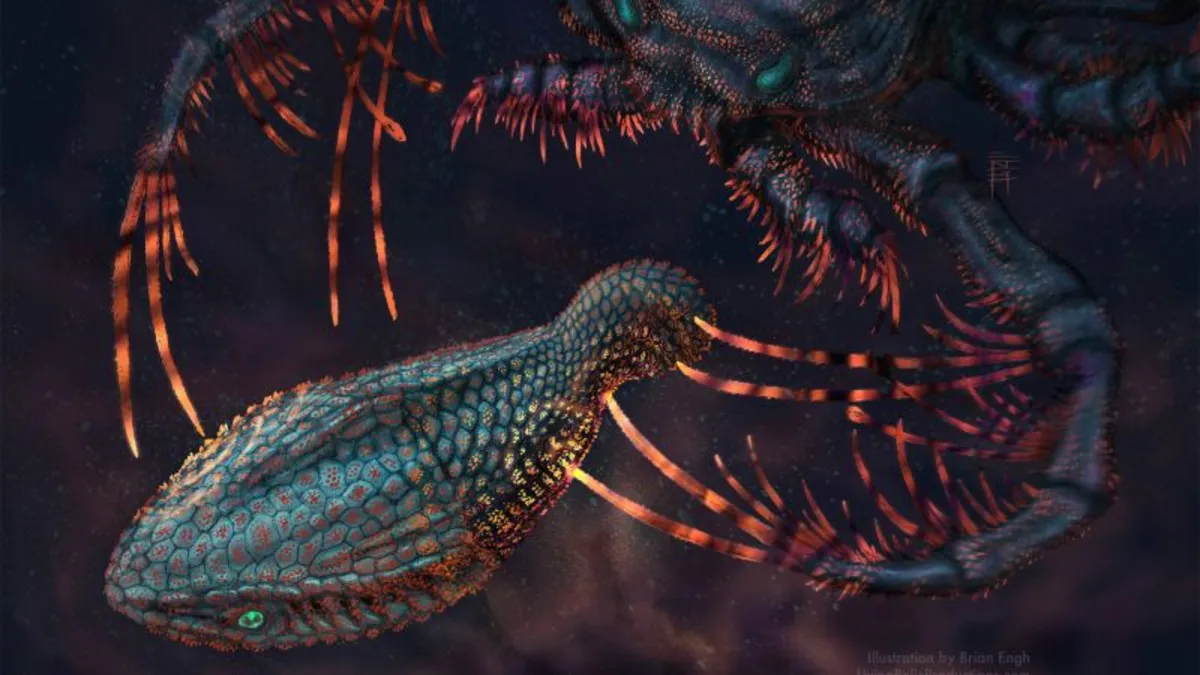
Sign up for CNN’s Wonder Theory science newsletter to explore the universe with news on fascinating discoveries, scientific advancements, and more. Recent research suggests that the sensitive interior of human teeth may have originated from an unexpected source: the sensory tissue in fish that swam in Earth’s oceans approximately 465 million years ago.
While human teeth are coated in hard enamel, it is the dentine — the inner layer of the tooth — that plays a crucial role in transmitting sensory information to the nerves. Dentine is responsible for reacting to various stimuli, such as the pressure from a hard bite, pain, or extreme temperatures like cold or sweetness. For years, researchers have speculated about the origins of teeth, contemplating the possibility that they evolved from bumps on the armored exoskeletons of ancient fish.
The structures known as odontodes were previously considered but their true purpose remained elusive. However, a new study featuring high-resolution 3D scans of fossils has provided compelling evidence that these external bumps contained dentine, aiding fish in sensing their environment. This groundbreaking research was reported in the journal Nature on Wednesday.
Lead study author Dr. Yara Haridy, a postdoctoral researcher at the University of Chicago, explained, “Covered in these sensitive tissues, when it bumped against something, it could sense that pressure, or it could detect changes in water temperature and swim accordingly.”
During their investigation, the research team discovered striking similarities between odontodes and structures known as sensilla, which serve as sensory organs in the shells of modern animals like crabs and shrimp, as well as in fossilized invertebrate arthropods. The evolution of odontodes in vertebrate fish and sensilla in invertebrate arthropods exemplifies evolutionary convergence — a phenomenon where similar traits evolve independently in different species.
Dr. Haridy elaborated, “These jawless fish and Aglaspidid arthropods (extinct marine arthropods) share an extremely distant common ancestor that likely lacked hard structures.” She added, “Both vertebrates and arthropods developed hard parts independently, and remarkably, they evolved similar sensory mechanisms integrated into their hard skeletons.”
One significant discovery made during the research was that a species once thought to be an ancient fish was actually an arthropod. Dr. Haridy’s original goal was to identify the oldest vertebrate in the fossil record. To achieve this, she collaborated with museums nationwide and utilized the Advanced Photon Source at Argonne National Laboratory for high-resolution CT scans.
Upon examining a fossil of a creature called Anatolepis, which had previously been classified as a vertebrate fish, the team identified a series of pores resembling dentine. “We were ecstatic when we realized we might have found the very first tooth-like structure in vertebrate tissues from the Cambrian period,” Dr. Haridy exclaimed.
To validate their findings, the researchers compared the scans of Anatolepis with those of other ancient fossils and modern species, including crabs, snails, and sharks. Their analysis indicated that Anatolepis more closely resembled arthropod fossils than previously thought. The structures they initially believed to be lined with dentine were actually similar to sensilla.
Additionally, the team discovered dentine-containing odontodes in ancient fish species like Eriptychius and Astraspis, further illuminating the evolutionary path of teeth.
The confusion surrounding Anatolepis was attributed to the fragmentary nature of the fossils, with the most complete specimens measuring only about 3 millimeters (0.1 inches). The advanced imaging techniques employed in this study allowed for a detailed 3D examination of the fossils, revealing their internal anatomy.
Dr. Haridy noted, “This shows us that ‘teeth’ can also serve sensory functions even when they are not located in the mouth.” She explained that both fish and arthropods developed sensitive armor, which plays a crucial role in their survival in predatory environments.
Modern fish, including sharks and certain catfish, possess odontodes, while many species have skin covered in small tooth-like structures called denticles, which give their skin a sandpaper-like texture. Dr. Haridy’s observations of the denticles in catfish revealed their connection to nerves, akin to the relationship between teeth and nerves in other animals.
The study authors suggest that the genes responsible for forming odontodes likely also contributed to the development of sensitive teeth in animals, including humans. This research supports the hypothesis that sensory structures may have first emerged on exoskeletons before evolving into teeth as a necessary adaptation.
Dr. Haridy plans to continue searching for fossils that could lead to the identification of the oldest vertebrate, as researchers believe there are earlier vertebrates than Astraspis and Eriptychius. Despite not discovering the oldest vertebrate through their research, the team’s findings have opened new avenues for exploration.
Dr. Neil Shubin, a senior study author, stated, “We were initially disappointed that Anatolepis wasn’t a vertebrate, but we were amazed by the new ideas that emerged from our research.” This illustrates the dynamic nature of science, where each discovery leads to new questions and insights.